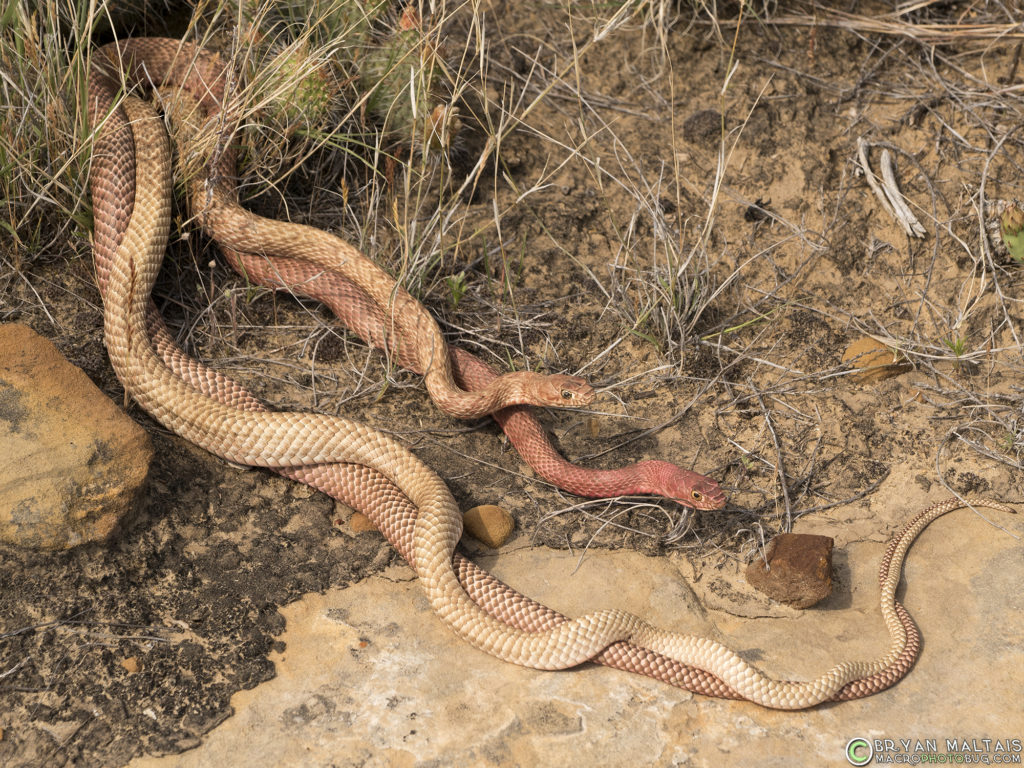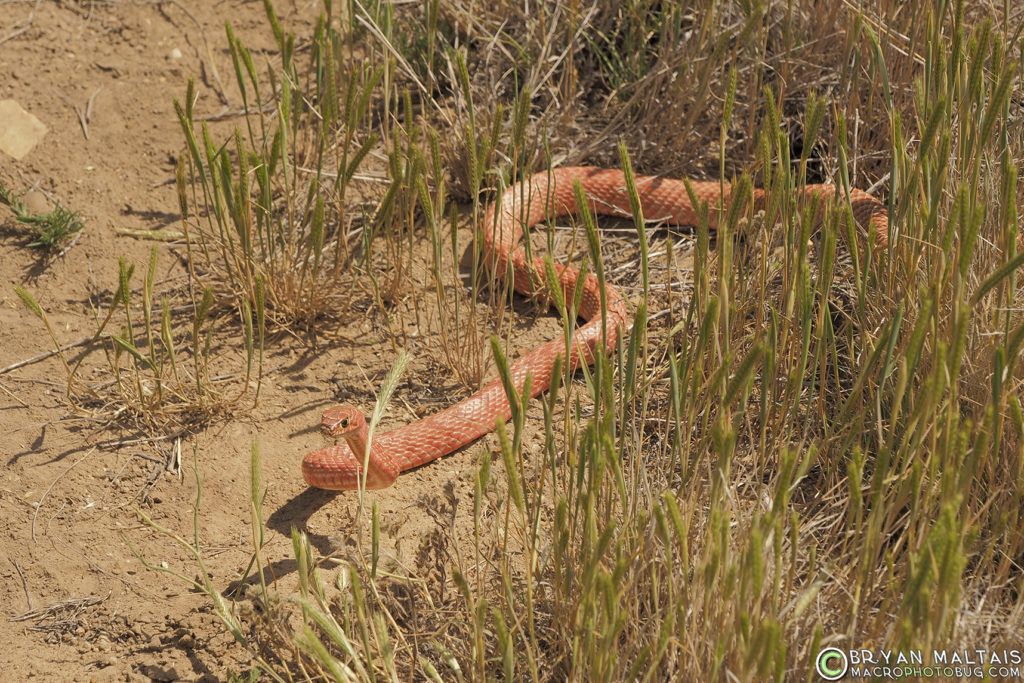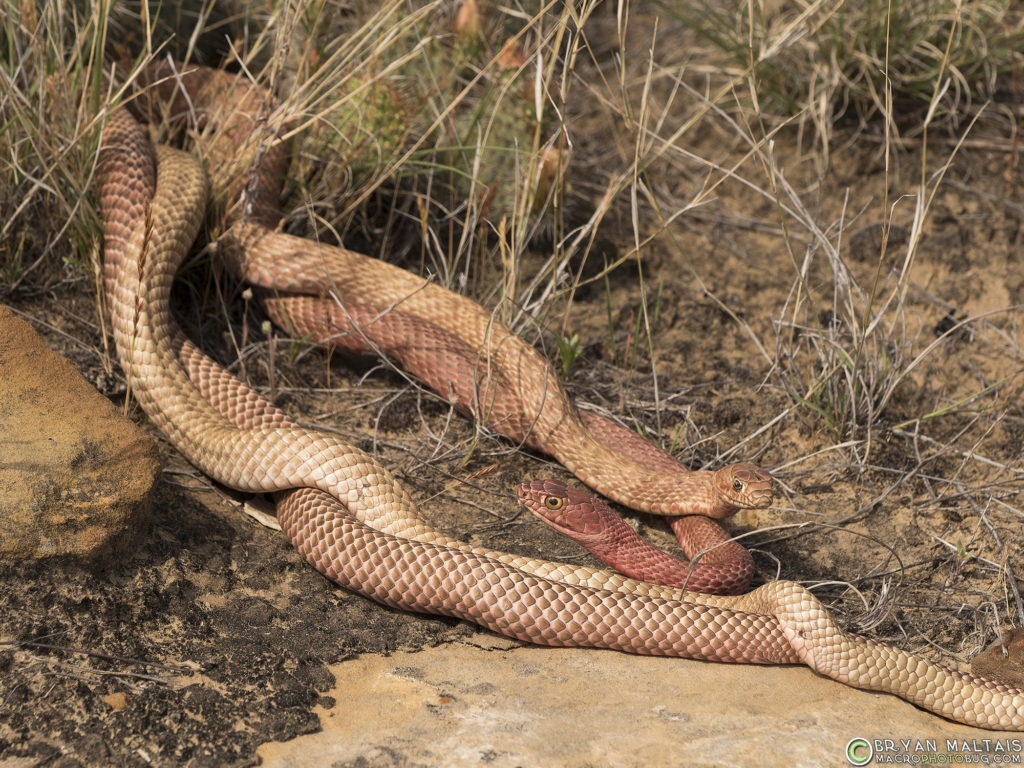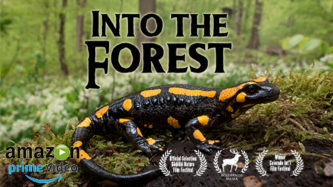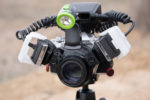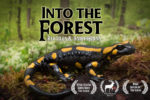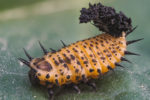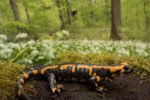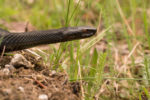Coachwhips are startling snakes to encounter. They move wildly like a ribbon blowing in the wind. They have a sculpted, shiny appearance as if made from plastic. Their bright pink and orange coloration, though beautiful, seems synthetic. Their brow slants down, giving them an angry scowl, which is fitting of their brazen temperament. After encountering 5 Coachwhips in a day I noticed an interesting pattern in behavior.
I was herping on the short-grass prairie of eastern Colorado. In the hot sun of late May it’s futile to expect to sneak up on reptiles. You have to slowly enter an area, stand motionless, and scan the landscape for coiled snakes and basking lizards. I came to a sandstone glade. The ground was made of wavy orange stone. There were many large outcrops that were grooved by wind erosion. Ghostly sandstone hoodoos stood 2 meters tall. The landscape was an amalgam of the Wild West and Mars. I scanned the rocks for life and spotted 2 Coachwhips intertwined. At first they looked like toys; frozen and shiny as if extruded from a mold. Though I like snakes, my adrenaline surged at their aggressive appearance. I got some nice shots of the mating pair. Then just a few steps away I came across another Coachwhip, orange and coiled beneath some sagebrush. This one gave me no time for a photo and made a hasty line to a rock crevice. He didn’t search for a hiding place, but seemed to know right where he was going.
I walked further into the prairie through some tall grass when a long, orange Coachwhip scared the crap out of me from behind. I heard a rustle in the grass and when I turned around he was reared up like a Cobra with his head in a strike position, and headed right in my direction. Though I knew this skinny, 2 lb animal couldn’t hurt me, it was extremely intimidating. But here’s the thing. I’ve heard many stories of snakes attacking, but I’ve always dismissed them. Snakes certainly strike when cornered, but they don’t chase after people- that would be suicide. So here I was with an angry Coachwhip headed strait for me, with his head reared up, apparently wanting to attack. He was about 2 meters away and closing fast. I simply couldn’t believe that he actually intended to attack me so I stood there to see what he’d do. The worst that could happen is that I’d get bitten; a harmless pin prick. As he got to within a meter he lowered his head and began slithering on the ground quickly toward me. He slithered right against my boot and continued past me into a rock pile that was directly behind me.
It seemed this coachwhip had the rock pile memorized as its escape refuge, and intended to bolt for it regardless of what stood in its path. There was no actual intent of attack. I continued on my path and startled 2 more Coachwhips along the way. They too bolted generally towards me and slithered right past into hiding places. One went down a mammal hole, the other into the crevice of an outcrop. I suppose Coachwhips could simply have a keen sense of where hiding places are, but on each account the spots seemed to be memorized. Coachwhips are highly active, and move across several acres every day. It would be interesting if they have predetermined hiding places along their route.
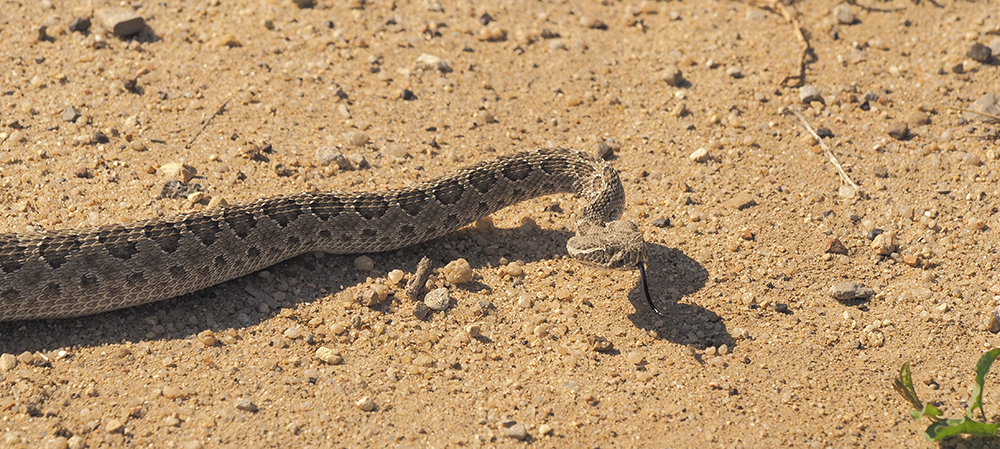
This Prairie Rattlesnake intended to crawl right through me to escape as I stood in front of her with my camera
This isn’t the first time I’ve experienced snakes heading right towards me to get to hiding places, but it is the most memorable. On this same trip I came across a Prairie Rattlesnake crossing a dirt road. When I got in front of her to photograph her, she continued on her path right towards me. Only this time I got the hell out of the way. These tales of snakes chasing after people are most likely nothing more than snakes trying to head for refuge while not posessing the intelligence to go around.
With these long, fast Coachwhips on the prowl I wouldn’t want to be any small animal on the prairie, including a Rattlesnake, which Coachwhips are immune to and eat. I took these photos with the Olympus OM-D EM-5 Mk II with the Olympus 60mm macro lens.

